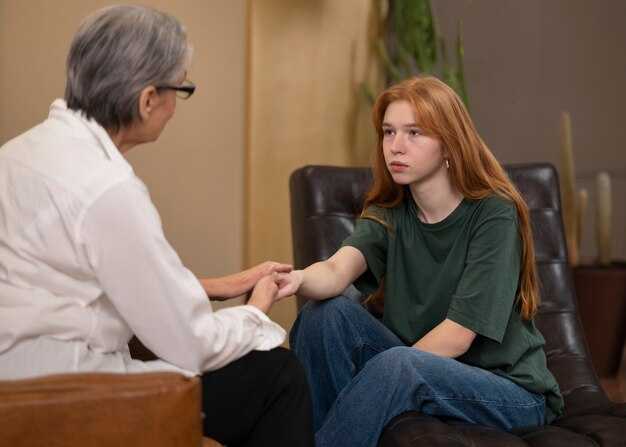For many people who experienced abuse or neglect as children, going to medical appointments can be intensely triggering. The questions clinicians ask, the physical examinations, and the authority they hold over whether someone receives care at all can feel invasive, accusatory, humiliating, and dismissive. It’s not only about bedside manner — most physicians, despite their training, often lack a deep, practical understanding of how childhood trauma shows up in adulthood. To be fair, the widespread awareness of how early abuse and neglect affect adults is a fairly recent development; there was limited knowledge for a long time, and research still has gaps. So no one could have fully known what childhood PTSD looked like in adults or precisely how to treat it. Still, in my experience every time I needed healthcare, my trauma was implicated — either it worsened my illness, caused chronic pain, interfered with recovery, or made it difficult to care for myself. Classic signs of complex PTSD were present throughout my life: headaches and stomach issues in childhood and more severe conditions later on. I often wasn’t the easiest patient; providers were rushed and I could be prickly and intense, so it’s hard to fault them entirely for mishearing me or for offering off-target advice. Yet, rarely did I leave feeling truly heard, understood, or helped by my doctors, and I know many of you have felt similarly. The term complex PTSD (C-PTSD) describes a cluster of symptoms that can emerge after prolonged, extreme stress—situations like fighting in a war or growing up in an abusive household. C-PTSD can begin at any age, though it typically has its roots in childhood. Lots of people learn to compartmentalize these symptoms into adulthood, but a new trauma or stressor can unmoor those defenses and suddenly the old wounds resurface. You may find yourself overwhelmed by health problems, struggling to concentrate or complete tasks, slipping into low mood, having relationships unravel, and trapped in repetitive negative thought loops. You might feel unlike yourself and have a strong urge to withdraw — and that’s often when someone seeks help from a doctor or therapist. What happens next varies widely. There’s no consensus about which symptoms are driven by trauma and which are not, and no standard definition of what being “trauma-informed” really entails. When clinicians treat trauma, their approaches tend to mirror whatever they already believe works — a kind of Rorschach test for prior preferences — and the research doesn’t support a single superior method. Only a few treatments have robust evidence behind them, and sometimes the least effective options are the ones most commonly prescribed. Training is inconsistent, diagnostic decisions are subjective, and clinical guidelines can be vague. What consistently helps, though, are approaches that focus on regulating the nervous system. Neurological dysregulation is one of the most frequent and persistent consequences of early trauma. Everyone experiences dysregulation at times and most people naturally return to a regulated state; but those who were neglected or abused as children tend to dysregulate more easily, more often, and take longer to settle back. That creates a prolonged window where trauma’s physiological and cognitive impacts run through the body and mind, producing emotionally dysregulated behavior that can lead to harsh words, impulsive choices, damaged relationships, missed opportunities, and stalled work. This is the day-to-day reality of living with trauma: it doesn’t matter how much one talks about past events or uncovers memories — if the nervous system keeps flipping into a triggered state, thinking clearly, processing information, solving problems with others, or engaging in healing is extremely difficult until re-regulation occurs. That is the central focus of my book Re-Regulated. The core message is that nervous system regulation can be learned: people can heal dysregulation and become skilled at calming themselves when trauma symptoms arise. Unfortunately, this paradigm is not yet the dominant framework among many doctors and therapists, which helps explain why so many adults with histories of early trauma feel unheard, unseen, and unsupported even by well-intentioned, knowledgeable clinicians. Even when providers care deeply and understand trauma in theory, that understanding doesn’t always translate into listening, recognizing how past trauma shapes current health, or offering effective guidance. So if you don’t feel understood by your doctor, how can you be sure their advice will help? The short answer: you can’t know for sure. No one can guarantee outcomes. What can be done is taking ownership of your healing: researching options, trying approaches you think might help, and seeking medical support as needed and as your finances permit (recognizing many people lack resources). Not every clinician will welcome patient input — and that input may sometimes be imperfect — but because trauma survivors have so often had to research, care for, and advocate for themselves, the knowledge they bring to appointments matters. Having been your own investigator and caregiver for years gives you a legitimate perspective on what might help. It’s understandable that pushing back or educating a clinician can feel like being difficult or demanding, but there are ways to communicate that decrease that dynamic. Being calm and open-minded helps, because clinicians ultimately decide what’s prescribed and often influence what care is available or covered by insurance. You have the right to express what you think is happening and what you feel you need, and you are not obliged to follow advice that doesn’t sit right with you. A practical tool can help when you go to appointments: a short list that articulates what you want clinicians to understand about childhood trauma and its effects. Below are ten things I wish every doctor I’ve seen had known about childhood trauma and how it affects people like me. Feel free to adapt them to make your own list to bring to a visit. There’s also a one-page downloadable summary available that condenses these points onto a two-sided sheet — a handy thing to hand to a provider — and instructions to get that download are shared at the end of the video. 1) First, don’t assume that childhood trauma limits recovery only to childhood. Healing can and does occur at any age — truly, people well into their eighties and nineties can and do make meaningful progress. 2) Second, don’t judge what kind of person I am by how I look. Appearances don’t reliably indicate whether someone experienced trauma or how resilient they are. Trauma crosses socioeconomic and demographic lines, and so does resilience. 3) Third, don’t infer my inner state from my momentary presentation. If I speak clearly, don’t assume nothing’s wrong; if I stare blankly, don’t assume I don’t care. I may be dysregulated. Written notes and clear instructions are enormously helpful because I can review them later when my mind is calmer. 4) Fourth, don’t dismiss or minimize my emotional reactivity as evidence that I’m uninformed. Medical visits are triggering for many of us: being touched, questioned, and offered kind attention can feel strange or threatening. That doesn’t mean the clinical concerns lack validity. You don’t have to fix everything the moment I disclose; saying “I hear you, that sounds really hard” and asking “What would you like to do next?” can be a helpful, respectful response. 5) Fifth, please avoid asking intimate, irrelevant personal questions. If I come in with a damaged thumb, that doesn’t necessitate a detailed reproductive history at that moment. 6) Sixth, when life is difficult for me, don’t assume the issue is mere ignorance about health behaviors. Often the barrier isn’t lack of facts but dysregulation — I may fully understand what to do but find it hard to act in my own best interest. 7) Seventh, don’t reduce everything to “stress” as if a simple realization will produce a cure. Stress-related illness is real, and while reducing stress can help, simply labeling it won’t produce an instant breakthrough. 8) Eighth, if I’m uninsured or low-income, don’t default to lecturing about diet or exercise in a way that assumes I have the means or understanding. At the same time, don’t assume I’m unintelligent; check my understanding respectfully, and explain terms like “analgesic” when needed. 9) Ninth, some of my self-diagnoses may be incorrect, but that doesn’t mean they shouldn’t be heard. Much of the knowledge I bring to appointments comes from years of being my own researcher and advocate; please respect the work I’ve done and listen to what I’ve learned. 10) Finally, thank you. Thank you to doctors, nurses, medical assistants, nurse practitioners, physician assistants, social workers, therapists, psychiatrists, counselors, analysts, professors, caregivers — anyone who does this work with compassion. There is frustration in what I’m sharing, but also deep gratitude for the clinicians who cared, who offered steady competence, and who treated me as someone worthy of help and attention. A few of you, in particular, made a real difference. That’s the list — tailor it as needed to reflect what you want a clinician to know about your history and how trauma affects you. The downloadable one-page summary is cleaned up and ready to print; click the link provided to get a copy for yourself. See you very soon [Music]
Practical tips to bring to appointments

- Prepare a one-page summary: one-sentence medical concern, two or three symptoms, relevant history (including trauma if you choose), current medications, what has helped or harmed in the past, and a short list of questions or requests.
- Request accommodations in advance: longer appointment, minimal waiting room time, option for a chaperone, permission to decline physical touch without judgment, or to have a door open/closed. Be specific about what would help you feel safe.
- Use simple scripts: if you’re nervous, bring a printed note you can hand the clinician (for example: “I have a history of childhood trauma that affects my nervous system. Please ask before touching and give me time to answer.”).
- Bring a support person or advocate if allowed — someone who knows your triggers and can help clarify your concerns during the visit.
- Ask for written follow-up: diagnoses, next steps, medication names/doses, and a clear safety plan you can reference later when dysregulated.
Short regulation tools to use before or during visits
- Grounding (5-4-3-2-1): name 5 things you see, 4 you can touch, 3 you hear, 2 you smell, and 1 you taste. This brings attention to the present moment.
- Box breathing: inhale 4 seconds — hold 4 — exhale 4 — hold 4. Repeat 3–6 times to slow the heart rate and calm the nervous system.
- Safe-place visualization: for 1–2 minutes, picture a specific, safe memory or place and notice sensory details (colors, textures, sounds).
- Grounding object: carry a small textured item (stone, fabric) to hold during stressful moments to anchor sensation.
- Alert the team early: if you begin to feel overwhelmed, say a prepared sentence like “I’m starting to feel overwhelmed; can we pause for a minute?”
What clinicians can do in the room
- Open with transparent choices: “I’d like to examine X. Is it okay if I do that now, or would you prefer to wait?”
- Offer predictability: outline what will happen during the visit, how long a procedure will take, and give a chance to ask questions before beginning.
- Use validating language: acknowledge distress (e.g., “That sounds really hard”) rather than minimizing or immediately fixing.
- Check comprehension gently: “Can I explain that another way?” or “What part of this plan feels doable for you?”
- Create small, achievable steps: break recommendations into one or two concrete actions so they’re less daunting for dysregulated patients.
- When appropriate, provide or refer to nervous-system–focused supports (occupational therapy, somatic therapy, DBT skills groups, pacing-based pain programs).
When you don’t feel heard — next steps
- Document the visit: write down what happened, what was said, and what you want next. This helps with follow-up and with choosing a different provider if needed.
- Seek a second opinion or a clinician with explicit trauma training. Look for language like “trauma-informed,” “attachment-aware,” or “sensory-sensitive” in clinic descriptions.
- Use patient advocates or case managers when available; they can help coordinate care, request reasonable accommodations, and mediate misunderstandings.
- If a clinician’s behavior is abusive or discriminatory, you can file a complaint with the clinic, hospital, or licensing board—keeping a record of dates and specifics is helpful.
Resources and tools
- Short books/articles on trauma-sensitive care and nervous system regulation — pick those that offer practical exercises and clinic-friendly language to share with providers.
- Apps for regulation: breath-training apps, grounding reminders, and guided body scans (look for privacy-friendly options if that’s a concern).
- Peer-support groups and community mental health resources can provide low-cost, practical strategies and referrals.
- Bring any reputable printouts or research summaries you trust to appointments if you want to share evidence-based options with a clinician.
Remember: you are the expert on your experience. Combining your lived knowledge with clinicians’ medical expertise can produce better outcomes when communication is collaborative and safety is prioritized. Small changes in how visits are structured and how questions are asked can make care far more accessible and effective for people with CPTSD.


 Co říct lékařům, kteří to s CPTSD prostě nechápou">
Co říct lékařům, kteří to s CPTSD prostě nechápou">

 Nejlepší ochrana před narcisem! TO narcise odradí.">
Nejlepší ochrana před narcisem! TO narcise odradí.">
 Jak udělat vyhýbavého posedlého (a nejdřív odejít)">
Jak udělat vyhýbavého posedlého (a nejdřív odejít)">
 Vyřešte své PROBLÉMY ve vztazích JEDNOU OTÁZKOU!">
Vyřešte své PROBLÉMY ve vztazích JEDNOU OTÁZKOU!">
 Jak poznat, že vás trauma nutí se stáhnout (kompilace 4 videí)">
Jak poznat, že vás trauma nutí se stáhnout (kompilace 4 videí)">
 Jak zranitelnost umírá ve vztazích">
Jak zranitelnost umírá ve vztazích">
 Trauma z dětství a sebepodvod v vztazích">
Trauma z dětství a sebepodvod v vztazích">
 Proč ti partner lže.">
Proč ti partner lže.">
 This Is What Missing You Looks Like to an Avoidant (The Painful Truth They Hide)">
This Is What Missing You Looks Like to an Avoidant (The Painful Truth They Hide)">
 Proč se stáváte úzkostnými a potřebnými: Vysvětleno „zájemcovská past“ vyhýbavce.">
Proč se stáváte úzkostnými a potřebnými: Vysvětleno „zájemcovská past“ vyhýbavce.">